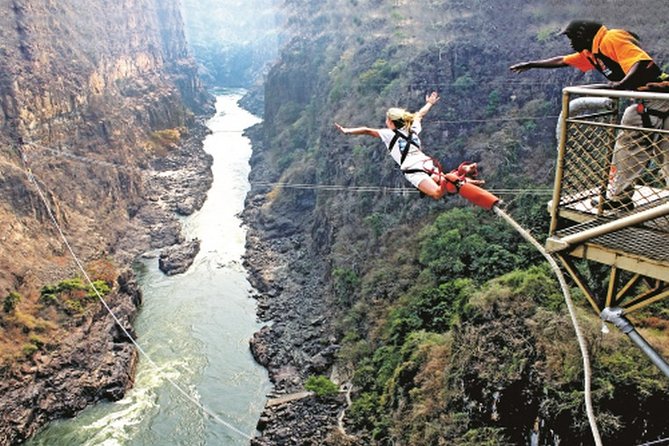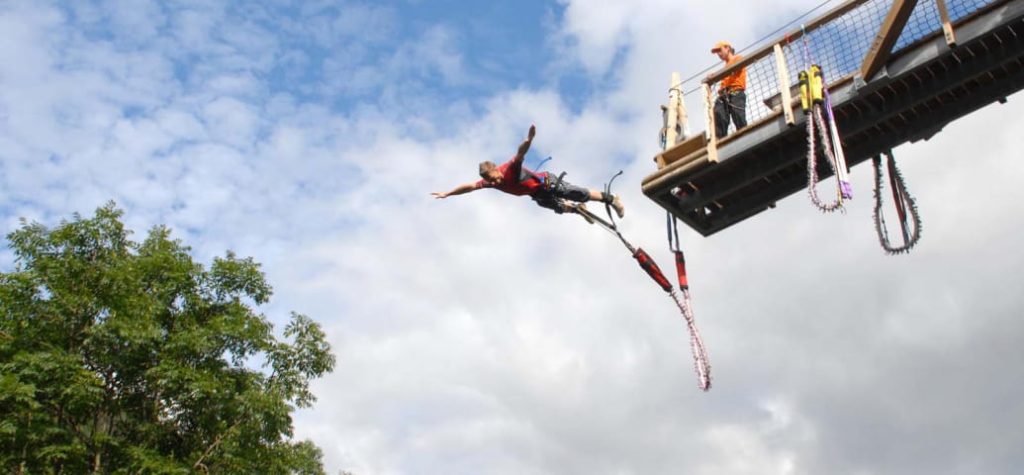
Bungee Jumping: The Thrilling Leap into Recreation
Bungee jumping is an extreme sport that involves jumping from a high structure while connected to a large elastic cord. The thrill and excitement come from the free-falling and the rebound. This sport originated in the late 20th century, inspired by the “land diving” ritual practiced in Vanuatu, where individuals leap off wooden towers with vines tied to their ankles. The first modern bungee jumps were made in 1979 from the Clifton Suspension Bridge in Bristol by members of the Oxford University Dangerous Sports Club, marking the beginning of bungee jumping as a recreational activity.
Over the years, bungee jumping has evolved, with jumps now being made from various structures like bridges, cranes, and even hot air balloons. Its popularity has soared due to the unique blend of fear, excitement, and exhilaration it offers.
Why Bungee Jumping Captivates People
A Sense of Adventure and Freedom
Many are captivated by bungee jumping due to the intense adrenaline rush and sense of adventure it provides. The feeling of free-falling and rebounding gives a sense of freedom and thrill unmatched by other activities. It’s an opportunity to confront fears and experience the extreme limits of human exhilaration.
Psychological Benefits
Bungee jumping also offers psychological benefits. Overcoming the fear to take the leap can boost confidence and provide a sense of accomplishment. It’s also seen as a form of escape from the mundane, offering a brief respite from daily life’s stresses and routines.
Safety Precautions in Bungee Jumping
Safety is paramount in bungee jumping. Operators must ensure the use of high-quality, well-maintained bungee cords, and secure harnesses. The height of the jump and the length of the bungee cord must be carefully calculated to avoid accidents. Before any jump, a thorough safety briefing and a check of all equipment are essential.
Professional bungee operators adhere to strict safety standards and regulations to ensure jumpers’ safety. Regular inspection of equipment and adherence to weight and health restrictions are critical safety measures.
Who May Be Interested in Bungee Jumping
Bungee jumping is typically popular among adventure seekers and thrill enthusiasts. It’s an appealing activity for those looking to step out of their comfort zone and experience something extraordinary. However, it’s also becoming popular among a broader audience, including tourists looking for a unique experience and individuals seeking to mark or celebrate significant life events.

Warnings and Considerations Before Bungee Jumping
Individuals with certain health conditions, such as heart problems, high blood pressure, or neurological disorders, should avoid bungee jumping. It’s also not recommended for pregnant women. All potential jumpers should be aware of the physical and emotional intensity of bungee jumping and assess their comfort and health before participating.
The Adrenaline Mountain: Taking Bungee Jumping to New Heights
Adrenaline Mountain, a concept in bungee jumping, takes the adventure to new heights, offering jumps from extreme altitudes or in unique settings. This concept is for those who have mastered regular jumps and are seeking even more intense experiences. Adrenaline Mountain pushes the boundaries of bungee jumping, combining it with other extreme activities or setting it in challenging environments like over raging rivers or deep canyons.



